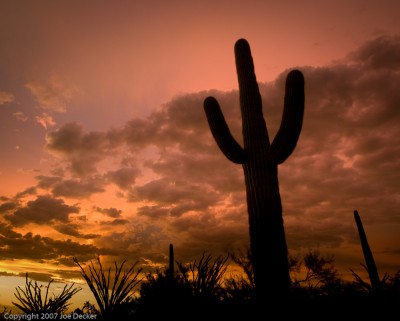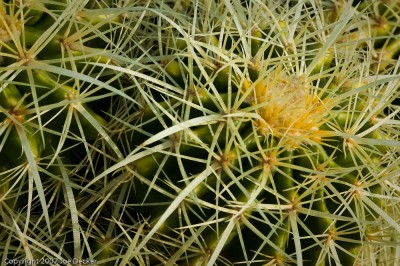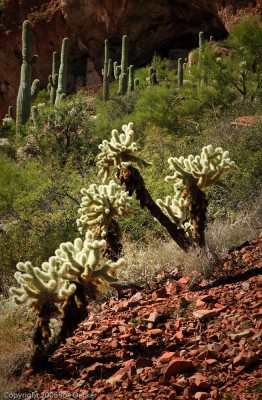
(In my three-part introduction to photographing Death Valley (part 2, part 3), I noted that I wanted to spend some time talking about techniques for photographing cactus, my apologies for the delay in getting that finished for you. I hope it was worth the wait!)
Cacti astonish me. The desert air can be dessicating, a sponge pulling every drop of water out of everything around it, and yet many of these plants have evolved to survive and even thrive in these harsh environments.
For the photographer, cacti offer interesting forms, patterns and texture from their spines, and color from the occasional desert bloom.
When I think of cactus and the desert, the first thing that comes to mind are the giant Saguaros, iconic symbols of the Old West. Saguaro can reach over 40 feet in height, although most adult specimens aren’t quite so tall. Saugaro National Park, located near Tucson, Arizona is a great location to get started photographing these giant wonders and the Sonoran desert in as well.

Monsoon season light often offers some of the most interesting potential for saguaro photographs: silhouettes of their classic shapes set against colorful sunsets. There are a couple tricks to realizing that vision, though. First, spend some time looking for a saguaro and an angle that gives you a clean, uncluttered silhouette, it’s too easy for lower plants or other saguaro to interfere with the composition. Second, don’t assume (as I mistakenly did at least once) that the Saguaro are as stable as (say), a more conventional tree trunk. In windy, stormy weather you will see the tops of the cactus move, which can lead to blurry silhouettes. Adjust your exposure accordingly.
If you want to capture more of the texture of large cacti such as saguaro, side-lighting (or, in a pinch, back-lighting with fill-flash) can also be very effective.

Spines of cactus are another source of interest in almost any variety of succulent. The prickly nature of most desert cacti and succulents helps the cactus in two ways: not only does it offer protection in an environment where both food and water are harder to come by, but for some species the spines also they also offer some degree of shade and cooling as well. These spines are typically deployed in repetitive pattern, and are therefore an endless source of macro photo opportunities.
In broader shots, these spines will tend to get a little lost in front-lit scenes, but in backlit scenes–particularly for plants with denser spine forests such as cholla–something magic happens. The blanket of spines picks up a glow, outlining the often-silhouetted form of the cactus itself. These sorts of shots can work particularly well when the sun is low but you can place the cactus against the landscape, typically hills or mountains in the background. (Don’t forget to keep a careful eye out for lens flare.)
A caution on cactus spines, the spines of most species are barbed. Avoid any sort of unprotected contact with cactus spines, particularly with most species of cholla. I once had the opportunity to watch as a friend stooped down to photograph and to put it delicately, backed into a desert cholla. (It’s not clear whether the embarassment or the pain of having to have the spines removed with pliers was worse.)
